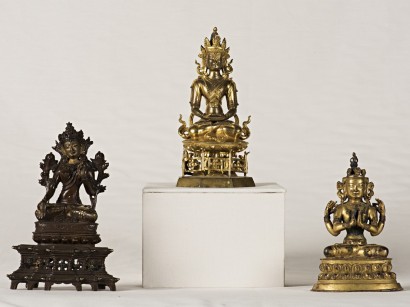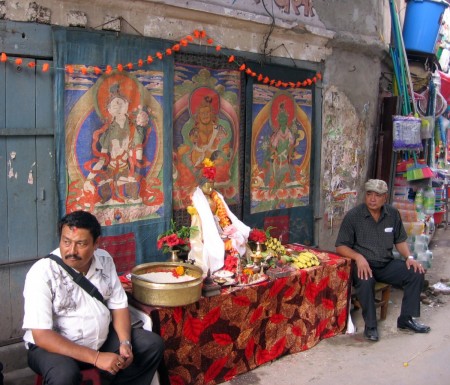Amitayus (Center), China, Qing dynasty, 18th century; gilt bronze; H. 7 1/8 in.; The Frances Lehman Loeb Art Center, Vassar College, Gift of Daniele Selby ’13, 2014.31.4.
White Tara (Left), Sino-Tibetan, 19th century; bronze with cold gold and inlays; H. 7 in.; The Frances Lehman Loeb Art Center, Vassar College, Gift of Daniele Selby ’13, 2014.31.1.
Six-Syllable Lord of the World (Shadakshari Lokeshvara) (Right), Tibet, 18th century; gilt bronze; H. 5 3/4 in.; The Frances Lehman Loeb Art Center, Vassar College, Gift of Daniele Selby ’13, 2014.31.3.





